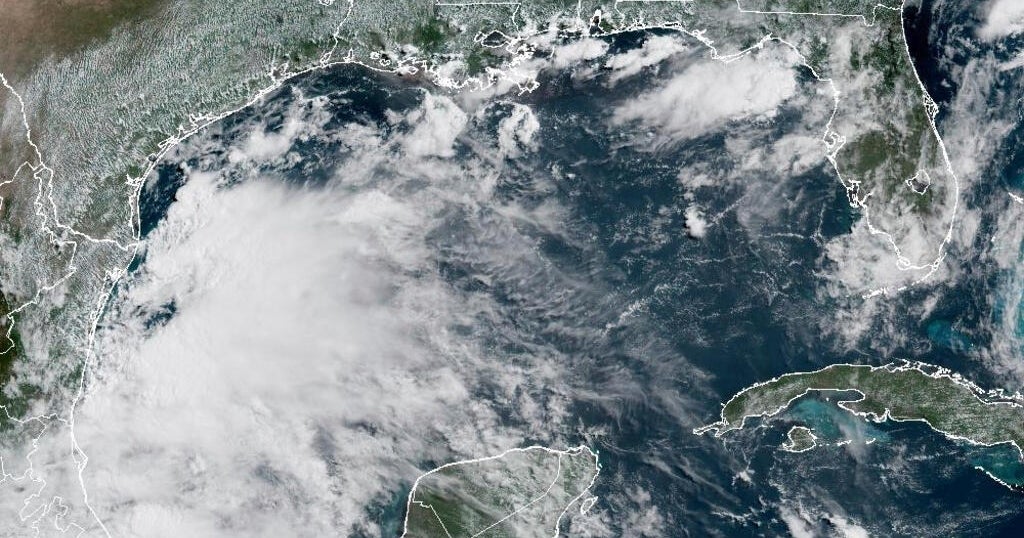Two tropical storms have developed on both coasts of Mexico, bringing threats of heavy rainfall to the region. The first, Tropical Storm Barry, is positioned off the southeastern coast, while the second, Tropical Storm Flossie, is situated off the southwestern coast. Both storms are expected to impact the country’s weather over the next few days, with significant rainfall forecasts and potential strengthening anticipated.
| Article Subheadings |
|---|
| 1) Formation of Tropical Storm Barry |
| 2) Potential Impact of Barry |
| 3) Introduction of Tropical Storm Flossie |
| 4) Potential Impact of Flossie |
| 5) Overview of Hurricane Seasons |
Formation of Tropical Storm Barry
Tropical Storm Barry emerged on June 29, 2025, as the second named storm of this year’s Atlantic hurricane season. Positioned approximately 50 miles east-southeast of Tuxpan, Mexico, and 130 miles southeast of Tampico, Barry has maximum sustained winds of 45 mph and is moving northwest at 12 mph, as reported by the U.S. National Hurricane Center (NHC) in Miami. This storm serves as a reminder of the active Atlantic hurricane season taking place from June 1 through November 30.
Potential Impact of Barry
Forecasters have issued a tropical storm warning for areas in southeastern Mexico as Barry approaches land. The storm is projected to bring significant rainfall, potentially ranging from three to six inches with isolated areas receiving up to ten inches across parts of Veracruz, San Luis Potosi, and Tamaulipas. These rainfall totals can lead to hazardous conditions, including flooding and landslides, as the storm moves inland. Barry is expected to weaken quickly after making landfall, but not before it presents significant risks to these regions.
Introduction of Tropical Storm Flossie
Simultaneously, Tropical Storm Flossie formed off Mexico’s southwestern coast. Located about 225 miles south of Acapulco, Flossie is moving west at a pace of 9 mph with sustained winds of 40 mph. While it has been categorized as a tropical storm, forecasters suggest that it has the potential to strengthen into a hurricane by Monday or Tuesday. However, unlike Barry, Flossie is expected to remain in open waters, potentially mitigating its impact on coastal populations.
Potential Impact of Flossie
The anticipated path of Flossie suggests that it could bring heavy rainfall to multiple states, including Oaxaca, Guerrero, Michoacan, Colima, and Jalisco, with similar rainfall amounts expected as with Barry—ranging from three to six inches. The concern with Flossie’s impending rainfall is that it could exacerbate conditions in areas still recovering from earlier storms, thus making infrastructure and emergency services particularly responsive to potential flooding situations.
Overview of Hurricane Seasons
The Pacific hurricane season commenced on May 15, while the Atlantic hurricane season runs from June 1 to November 30, with peak activity commonly occurring between mid-August and mid-October. NOAA officials have indicated a heightened likelihood of an “above-normal” Atlantic season, projecting between 13 to 19 named storms, with six to ten anticipated to develop into hurricanes. Moreover, three to five of these storms are expected to reach major hurricane status, raising additional concerns for coastal communities.
| No. | Key Points |
|---|---|
| 1 | Tropical Storm Barry has formed near Mexico’s southeast coast. |
| 2 | Rainfall of 3-10 inches expected across Veracruz, San Luis Potosi, and Tamaulipas. |
| 3 | Tropical Storm Flossie has formed off the southwestern coast, moving west. |
| 4 | Flossie may strengthen into a hurricane but likely remains in open water. |
| 5 | NOAA expects an “above-normal” Atlantic hurricane season with 13-19 named storms. |
Summary
In conclusion, the recent formation of Tropical Storms Barry and Flossie presents significant challenges for coastal communities in Mexico. With forecasts predicting substantial rainfall and the threat of flooding, officials must prepare for potential impacts. Meanwhile, the ongoing Atlantic hurricane season raises alarms of increased storm activity, guiding monitoring and response efforts as residents remain vigilant.
Frequently Asked Questions
Question: What measures can communities take to prepare for tropical storms?
Communities can prepare for tropical storms by establishing emergency plans, creating evacuation routes, and ensuring that emergency supplies are readily available, including food, water, and medical supplies.
Question: How is a tropical storm classified?
A tropical storm is classified when its sustained winds range between 39 to 73 mph. When a storm reaches sustained winds of 74 mph or more, it is categorized as a hurricane.
Question: What should individuals do during a tropical storm warning?
During a tropical storm warning, individuals should stay informed through official updates, secure outdoor items, avoid unnecessary travel, and have an emergency plan ready, including safe shelter.


